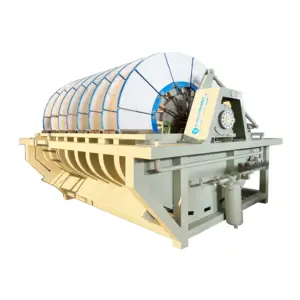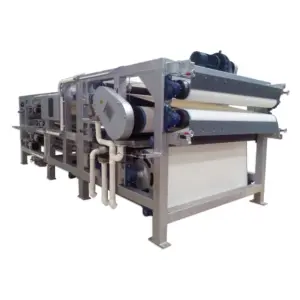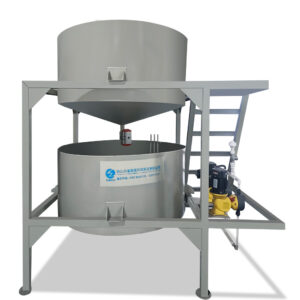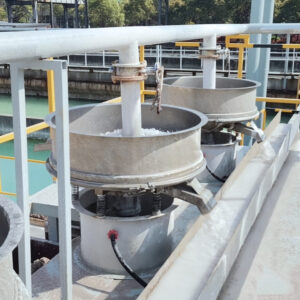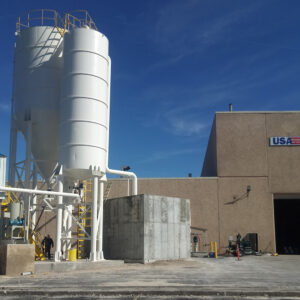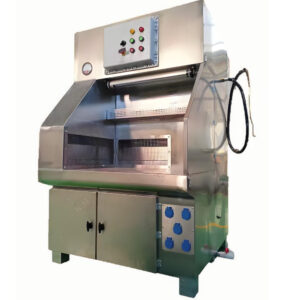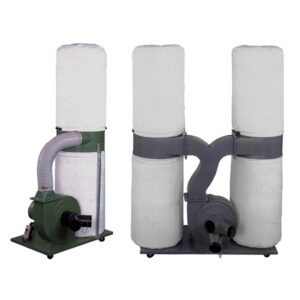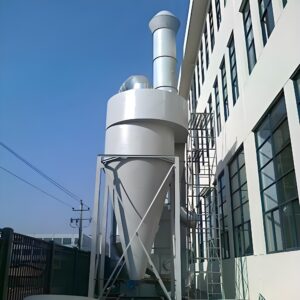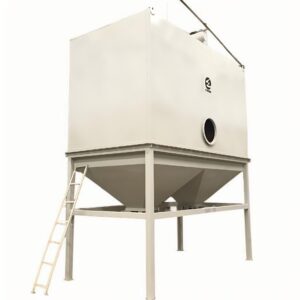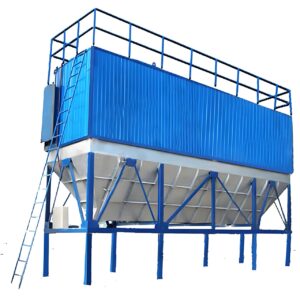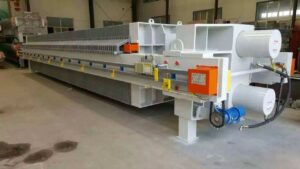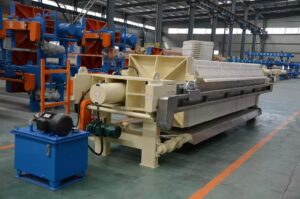Selecting the right downdraft table is crucial for maintaining a safe and efficient work environment in industries that deal with dust, fumes, and other airborne particles. Whether you're involved in woodworking, metalworking, or any other field that generates potentially hazardous particulates, understanding the key factors in downdraft table selection can make a significant difference in your workplace's air quality and overall productivity.
In this comprehensive guide, we'll explore ten essential factors to consider when choosing a downdraft table. From size and capacity to filtration systems and compliance with safety standards, we'll delve into the critical aspects that should inform your decision-making process. By the end of this article, you'll be well-equipped to make an informed choice that best suits your specific needs and ensures a cleaner, safer work environment.
As we navigate through the various considerations, keep in mind that the ideal downdraft table for your application will depend on a combination of factors unique to your workspace and processes. Let's begin our journey to finding the perfect downdraft table for your needs.
Choosing the right downdraft table is essential for maintaining air quality, ensuring worker safety, and complying with industry regulations. The selection process involves carefully evaluating multiple factors to find a solution that matches your specific application requirements.
What Size Downdraft Table Do You Need?
When it comes to selecting a downdraft table, size is a critical factor that can significantly impact its effectiveness and suitability for your workspace. The dimensions of your downdraft table should be determined by the size of the materials you typically work with and the available space in your facility.
A properly sized downdraft table ensures optimal air flow and particle capture, enhancing the overall efficiency of your dust collection system. It's essential to consider not only the current requirements but also potential future needs to avoid outgrowing your equipment too quickly.
Selecting a table that's too small may result in inadequate coverage and reduced effectiveness, while an oversized table might be unnecessarily expensive and take up valuable floor space. To make the right choice, carefully assess your workspace and typical workpiece sizes.
The size of a downdraft table should be at least 6 inches larger on all sides than the largest workpiece you handle regularly. This extra space ensures proper airflow around the entire work area, maximizing dust and fume capture efficiency.
| Table Size | Recommended Workpiece Size |
|---|---|
| 24" x 36" | Up to 18" x 30" |
| 36" x 48" | Up to 30" x 42" |
| 48" x 96" | Up to 42" x 90" |
When determining the appropriate size, consider not only the dimensions of your current projects but also any potential future needs. It's often wise to choose a slightly larger table to accommodate growth and versatility in your operations. Remember, the goal is to strike a balance between ample work surface and efficient use of your facility's space.
What Type of Filtration System is Most Suitable?
The filtration system is the heart of any downdraft table, responsible for capturing and removing harmful particles from the air. Choosing the right filtration system is crucial for maintaining air quality and protecting both your workers and equipment.
There are several types of filtration systems available, each with its own strengths and ideal applications. The most common types include cartridge filters, bag filters, and HEPA filters. Your choice will depend on the type and size of particles you're dealing with, as well as the volume of air that needs to be filtered.
When selecting a filtration system, consider factors such as the filter's efficiency rating, its capacity to handle your specific type of dust or fumes, and the ease of maintenance and filter replacement. It's also important to think about the long-term costs associated with filter replacements and system upkeep.
High-efficiency particulate air (HEPA) filters are capable of removing 99.97% of particles as small as 0.3 microns, making them an excellent choice for applications dealing with fine dust or potentially hazardous materials.
| Filter Type | Particle Size Range | Typical Applications |
|---|---|---|
| Cartridge | 0.5 – 100 microns | Woodworking, Metalworking |
| Bag | 1 – 100 microns | Heavy dust loads, Coarse particles |
| HEPA | 0.3 microns and up | Fine dust, Hazardous materials |
The right filtration system will not only improve air quality but also contribute to the longevity of your equipment and the health of your workers. Consider consulting with a specialist from PORVOO to determine the most suitable filtration system for your specific needs and ensure compliance with relevant air quality standards.
How Important is Airflow Capacity?
Airflow capacity is a crucial factor in the effectiveness of a downdraft table. It determines how much air the table can move and, consequently, how efficiently it can capture dust, fumes, and other airborne particles. The right airflow capacity ensures that contaminants are quickly drawn away from the work surface and into the filtration system.
When considering airflow capacity, you need to take into account the type of work you'll be doing, the materials you'll be working with, and the size of your work area. Inadequate airflow can result in poor particle capture, while excessive airflow might interfere with your work processes or create unnecessary noise.
It's important to note that airflow capacity is typically measured in cubic feet per minute (CFM). The required CFM will vary depending on your specific application and the types of contaminants you're dealing with.
For most woodworking applications, a general rule of thumb is to have at least 350-400 CFM of airflow per square foot of table surface area to ensure effective dust capture.
| Application | Recommended Airflow (CFM/sq ft) |
|---|---|
| Light Duty | 250-300 |
| Medium Duty | 350-400 |
| Heavy Duty | 450-500+ |
When selecting a downdraft table, look for models that offer adjustable airflow settings. This feature allows you to fine-tune the airflow based on your specific needs, ensuring optimal performance across various applications. Remember, the goal is to find a balance between effective particle capture and maintaining a comfortable work environment.
Wet or Dry Downdraft Table: Which is Better for Your Application?
Choosing between a wet and dry downdraft table is a critical decision that depends largely on the nature of your work and the types of materials you're handling. Both types have their strengths and are suited to different applications, so understanding their characteristics is key to making the right choice.
Dry downdraft tables are the most common type and are suitable for a wide range of applications. They use a dry filtration system to capture dust and particles, making them ideal for woodworking, metalworking, and other processes that generate dry particulates. Dry tables are generally easier to maintain and can be more energy-efficient.
On the other hand, wet downdraft tables use water as a filtration medium. They're particularly effective for capturing sparks, fine metallic dust, and other potentially combustible materials. Wet tables are often required when working with materials that pose a fire or explosion risk, such as aluminum, magnesium, or titanium.
Wet downdraft tables are essential for applications involving combustible dust, as they comply with NFPA standards for handling these materials. They also excel at controlling odors and volatile organic compounds (VOCs).
| Feature | Dry Downdraft Table | Wet Downdraft Table |
|---|---|---|
| Filtration Method | Air filters | Water curtain |
| Best For | Dry particles, wood dust | Combustible metals, sparks |
| Maintenance | Filter replacement | Water management |
| Fire Risk | Higher | Lower |
| Cost | Generally lower | Usually higher |
When making your decision, consider the specific materials you work with, your safety requirements, and your facility's capabilities for handling water-based systems. If you're dealing with combustible materials or need to control VOCs, a wet downdraft table might be the safer choice. For most other applications, a dry downdraft table will likely meet your needs effectively.
For expert advice on choosing between wet and dry downdraft tables, consider exploring the Downdraft table selection criteria offered by industry leaders. Their expertise can help you make an informed decision based on your unique requirements.
How Does Table Construction Affect Performance and Durability?
The construction of a downdraft table plays a significant role in its performance, durability, and overall lifespan. A well-constructed table not only ensures efficient dust and fume capture but also withstands the rigors of daily use in industrial environments.
When evaluating table construction, pay attention to the materials used, the quality of welding and joints, and the overall design. High-quality tables are typically made from robust materials like heavy-gauge steel or stainless steel, which offer excellent durability and resistance to corrosion.
The table's work surface is another crucial aspect to consider. It should be sturdy enough to support your workpieces and resistant to wear and tear. Some tables feature replaceable work surfaces, which can be a cost-effective option for long-term use.
Tables constructed with 14-gauge or thicker steel and reinforced with a sturdy internal frame can withstand heavy loads and frequent use, making them ideal for industrial applications.
| Construction Feature | Benefits |
|---|---|
| Heavy-gauge steel | Durability, load-bearing capacity |
| Stainless steel | Corrosion resistance, easy cleaning |
| Reinforced frame | Stability, reduced vibration |
| Replaceable surface | Cost-effective maintenance |
Additionally, consider the design of the table's plenum (the space beneath the work surface where air is drawn). A well-designed plenum ensures even airflow across the entire table surface, maximizing dust capture efficiency. Look for tables with baffles or other features that promote uniform air distribution.
The quality of construction directly impacts the table's performance and longevity. A robustly built table will maintain its efficiency over time, require less maintenance, and provide a better return on investment. When selecting a downdraft table, don't hesitate to ask manufacturers about their construction methods and materials to ensure you're getting a product that will stand the test of time.
What Safety Features Should You Look For?
Safety should be a top priority when selecting a downdraft table. The right safety features not only protect your workers but also ensure compliance with industry regulations and standards. When evaluating downdraft tables, pay close attention to the safety features they offer.
One of the most critical safety features is explosion-proof components. If you're working with combustible dust or materials, these components are essential to prevent potential fires or explosions. Look for tables that are certified for use with hazardous materials and comply with relevant NFPA standards.
Another important safety feature is automatic shut-off mechanisms. These systems can detect clogs or other issues that might compromise the table's effectiveness and shut down the system to prevent damage or safety hazards.
Downdraft tables equipped with spark arrestors can significantly reduce the risk of fire by preventing sparks from entering the filtration system, making them crucial for metalworking applications.
| Safety Feature | Function |
|---|---|
| Explosion-proof components | Prevent ignition of combustible dust |
| Automatic shut-off | Protect system from damage due to clogs |
| Spark arrestors | Reduce fire risk in metalworking |
| Fire suppression systems | Quickly extinguish fires if they occur |
| Emergency stop buttons | Allow quick shutdown in case of emergencies |
Additionally, consider features like fire suppression systems, which can quickly extinguish fires if they do occur, and easily accessible emergency stop buttons that allow operators to quickly shut down the system in case of an emergency.
It's also worth looking for tables with safety guards or barriers around moving parts, as well as proper grounding to prevent static electricity buildup. These features can significantly reduce the risk of accidents and injuries in your workplace.
Remember, the specific safety features you need will depend on your particular application and the materials you're working with. Always consult with safety experts and ensure that any downdraft table you choose meets or exceeds the safety standards relevant to your industry.
How Important is Ease of Maintenance?
Ease of maintenance is a critical factor to consider when selecting a downdraft table. A table that's easy to maintain not only ensures consistent performance but also reduces downtime and maintenance costs over its lifetime. Regular maintenance is essential for keeping your downdraft table operating at peak efficiency and extending its lifespan.
When evaluating maintenance requirements, consider factors such as filter accessibility, ease of cleaning, and the availability of replacement parts. Tables with easily removable filters and accessible components make routine maintenance tasks quicker and more straightforward, reducing the time and effort required to keep the system in top condition.
Look for features like tool-free filter changes, which can significantly reduce maintenance time. Some advanced models even come with self-cleaning mechanisms or indicators that alert you when maintenance is needed.
Downdraft tables with modular designs allow for easier maintenance and upgrades, potentially extending the useful life of the equipment and providing better long-term value.
| Maintenance Feature | Benefit |
|---|---|
| Tool-free filter access | Quick and easy filter changes |
| Self-cleaning mechanisms | Reduced manual cleaning requirements |
| Maintenance indicators | Timely alerts for necessary upkeep |
| Modular design | Easier repairs and upgrades |
| Accessible components | Simplified troubleshooting and repairs |
Consider also the availability and cost of replacement parts. Opting for a table from a reputable manufacturer like PORVOO can ensure that you'll have access to necessary parts and support for years to come.
It's also worth considering the cleaning requirements of the table. Some models feature smooth surfaces and rounded corners that prevent dust accumulation and make cleaning easier. For wet downdraft tables, look for designs that facilitate easy draining and cleaning of the water system.
Remember, a table that's easier to maintain is more likely to receive regular maintenance, which in turn leads to better performance, longer lifespan, and ultimately, a better return on your investment.
What Role Does Energy Efficiency Play in Your Decision?
Energy efficiency is an increasingly important factor to consider when selecting a downdraft table. Not only can an energy-efficient model help reduce your operational costs, but it can also contribute to your company's sustainability goals and reduce its environmental impact.
When evaluating energy efficiency, look at factors such as motor efficiency, fan design, and overall system performance. High-efficiency motors and well-designed fans can significantly reduce energy consumption without compromising on performance. Some advanced models also feature variable speed drives that adjust the fan speed based on demand, further optimizing energy use.
Consider also the filtration system's efficiency. A more efficient filtration system may require less airflow to achieve the same level of particle capture, resulting in lower energy consumption. Additionally, some systems incorporate energy-recovery features that can help offset heating or cooling costs.
Downdraft tables with variable frequency drives (VFDs) can reduce energy consumption by up to 50% compared to fixed-speed systems, as they adjust fan speed based on actual demand.
| Energy-Saving Feature | Potential Savings |
|---|---|
| High-efficiency motors | Up to 10% energy savings |
| Variable speed drives | Up to 50% energy savings |
| Efficient filtration | Reduced airflow requirements |
| Energy recovery systems | Offset HVAC costs |
| Smart controls | Optimize energy use based on demand |
It's also worth considering the long-term energy costs when making your decision. While a more energy-efficient model may have a higher upfront cost, the savings in energy bills over time can make it a more cost-effective choice in the long run.
Look for tables that are certified by energy efficiency programs or have energy consumption data available. This information can help you compare different models and make an informed decision based on your energy use priorities.
Remember, energy efficiency not only affects your bottom line but also contributes to a more sustainable operation. By choosing an energy-efficient downdraft table, you're investing in both your company's future and the environment.
How Does Compliance with Industry Standards Affect Your Choice?
Compliance with industry standards is a crucial factor that should significantly influence your choice of downdraft table. These standards are designed to ensure safety, efficiency, and consistency across various industries, and adhering to them is often a legal requirement.
When selecting a downdraft table, it's essential to be aware of the specific standards that apply to your industry and application. For instance, if you're working with combustible dust, you'll need to comply with NFPA standards, particularly NFPA 652 (Standard on the Fundamentals of Combustible Dust) and NFPA 654 (Standard for the Prevention of Fire and Dust Explosions).
Other important standards may include those set by OSHA for workplace safety, EPA regulations for air quality, and industry-specific standards for particle capture efficiency. Ensuring your downdraft table meets or exceeds these standards not only keeps you in compliance with regulations but also helps protect your workers and maintain a safe, efficient work environment.
Downdraft tables that comply with NFPA 484 standards for combustible metals are essential for applications involving materials like aluminum, magnesium, or titanium, as they provide the necessary safeguards against fire and explosion risks.
| Standard | Focus Area | Importance |
|---|---|---|
| NFPA 652 | Combustible Dust | Fire and explosion prevention |
| OSHA 1910.1000 | Air Contaminants | Worker exposure limits |
| EPA Method 5 | Particulate Matter | Emissions control |
| ACGIH Guidelines | Industrial Ventilation | System design and performance |
When evaluating downdraft tables, look for certifications or documentation that demonstrate compliance with relevant standards. Reputable manufacturers should be able to provide this information and explain how their products meet or exceed the required standards.
It's also worth considering future compliance needs. As regulations can change over time, choosing a table that exceeds current standards or can be easily upgraded may provide more long-term value and reduce the risk of non-compliance in the future.
Remember, compliance isn't just about avoiding fines or legal issues; it's about ensuring the safety and well-being of your workers and maintaining the quality of your products and processes. By prioritizing compliance in your selection process, you're investing in the long-term success and sustainability of your operations.
What Additional Features Can Enhance Functionality?
When selecting a downdraft table, it's important to consider additional features that can enhance its functionality and adaptability to your specific needs. These features can improve efficiency, user comfort, and overall performance, making your investment even more valuable.
One key feature to look for is adjustable airflow. This allows you to fine-tune the suction power based on the materials you're working with and the task at hand. Some advanced models offer zone control, allowing you to direct airflow to specific areas of the table where it's needed most.
Another useful feature is height adjustability. This can greatly improve ergonomics, allowing workers of different heights to work comfortably and reducing the risk of strain or injury. Some tables offer manual adjustment, while others have powered mechanisms for easy height changes.
Downdraft tables with integrated lighting systems can significantly improve visibility, reducing eye strain and enhancing the quality of detailed work. LED lighting is particularly effective and energy-efficient for this purpose.
| Feature | Benefit |
|---|---|
| Adjustable airflow | Customizable suction for different materials |
| Height adjustability | Improved ergonomics for diverse users |
| Integrated lighting | Enhanced visibility for detailed work |
| Modular design | Flexibility for future upgrades |
| Noise reduction | Improved work environment |
Consider also the potential benefits of a modular design. This allows for easier upgrades or modifications in the future, potentially extending the useful life of your downdraft table and adapting to changing needs.
For applications involving heavy or awkward workpieces, features like built-in rollers or ball transfers can make material handling much easier and safer. Some tables also offer tool storage options or the ability to integrate other equipment, streamlining your workspace.
Noise reduction features can be particularly valuable in busy work environments. Look for tables designed with sound-dampening materials or enclosures that can help reduce noise levels and create a more comfortable work atmosphere.
Lastly, consider whether smart features like digital controls or remote monitoring capabilities would be beneficial for your operations. These can provide more precise control and valuable data on system performance and maintenance needs.
By carefully considering these additional features, you can select a downdraft table that not only meets your basic requirements but also enhances your overall work processes and environment.
In conclusion, selecting the right downdraft table involves careful consideration of multiple factors, each playing a crucial role in ensuring the table's effectiveness, safety, and longevity. From size and filtration systems to energy efficiency and compliance with industry standards, every aspect contributes to the overall performance and value of your investment.
Remember that the ideal downdraft table for your needs will depend on your specific application, workspace, and the materials you work with. It's essential to thoroughly assess your requirements and prioritize the features that will have the most significant impact on your operations.
By taking into account factors such as airflow capacity, table construction, safety features, and ease of maintenance, you can make an informed decision that will benefit your workplace for years to come. Don't hesitate to consult with experts or request demonstrations from manufacturers to ensure you're choosing the best possible solution.
Ultimately, the right downdraft table will not only improve air quality and safety in your workplace but also enhance productivity and efficiency. It's an investment in the health of your workers, the quality of your products, and the overall success of your operations. Choose wisely, and you'll reap the benefits of cleaner air, safer working conditions, and improved compliance with industry standards.
External Resources
OSHA Guidelines for Combustible Dust – Provides information on OSHA's standards and guidelines for managing combustible dust in the workplace.
National Fire Protection Association (NFPA) Standards – Offers access to various NFPA standards relevant to fire prevention and safety in industrial settings.
American Conference of Governmental Industrial Hygienists (ACGIH) – Provides resources on industrial ventilation guidelines and best practices.
Environmental Protection Agency (EPA) Air Quality Standards – Offers information on national air quality standards and regulations.
Occupational Safety and Health Administration (OSHA) Ventilation Standards – Provides OSHA's standards for ventilation in various industrial applications.
Industrial Vacuum Cleaners Association (IVCA) – Offers resources and information on industrial vacuum and dust collection systems.
- American Industrial Hygiene Association (AIHA) – Provides resources and guidelines for maintaining healthy work environments, including air quality management.
